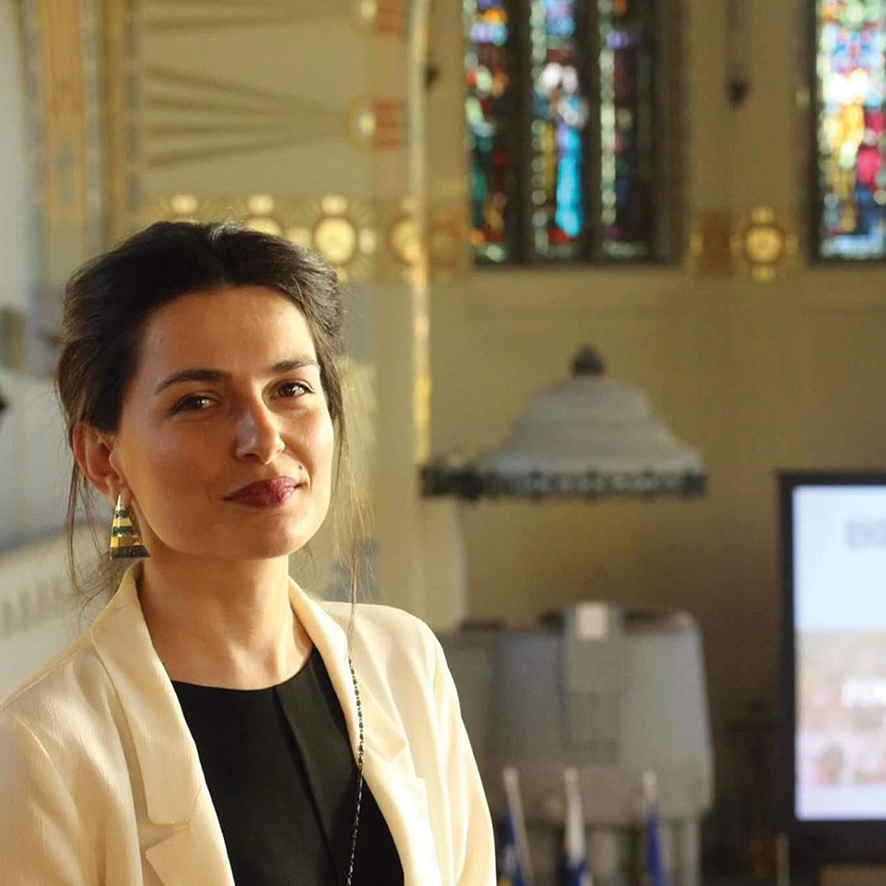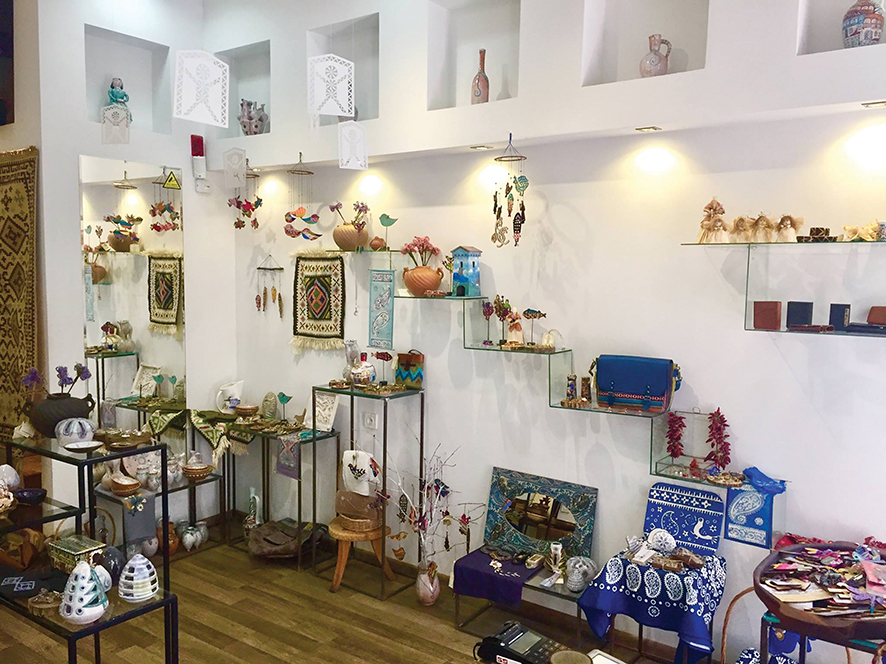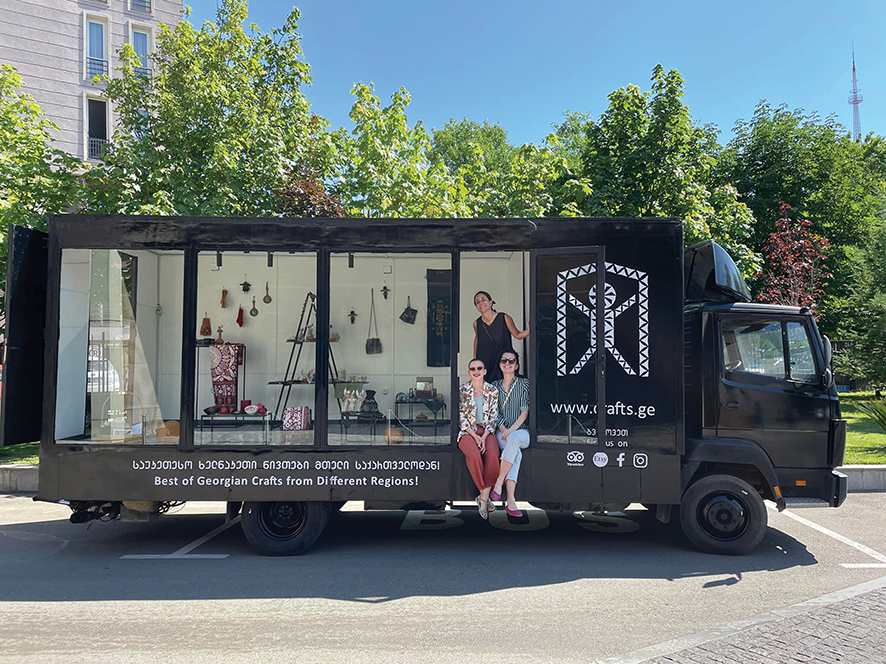In Georgia, a significant initiative is changing the landscape of traditional crafts. Founded in 2015, the Georgian Heritage Crafts Association and its social shop, Ethnodesign, focus on supporting local artisans and their crafts, providing sustainable income while preserving cultural traditions. Ana Shanshiashvili and Irina Mania, the founders, discuss the journey of this movement with GEORGIA TODAY.

A Vision Born from Tradition
The roots of this initiative trace back to a European Union project aimed at uniting craftsmen across Georgia. “The main goal was to bring together masters engaged in traditional crafts throughout Georgia,” Ana explains. The vision was ambitious: to create a supportive community for artisans. Today, the association has grown to include 350 members, each contributing to the rich tapestry of Georgian craftsmanship.
For many local craftsmen, traditional crafts are vital sources of income. Ana notes, “The traditional craft is one of the most important sources of income for citizens.” However, the challenge was clear: many artisans faced difficulties in adapting their work to modern market demands. Traditionally, these crafts were often viewed as souvenirs targeted primarily at foreign tourists. “We realized that traditional handmade products were always associated with souvenirs, which were to be bought by foreigners,” she says.

Bridging Tradition and Modernity
In 2016, Ethnodesign was launched with a mission to merge traditional techniques with contemporary design. “Our activity was aimed at making recommendations on the development of these specific products using traditional elements,” Irina states. “This approach not only preserves age-old practices but also ensures that artisans can compete in today’s marketplace.”
Initially, there was significant skepticism among artisans, Ana tells us. Many artisans were wary of change, rooted in the fear of losing their traditional identities. However, as a few began to experiment and see success, word spread throughout the community. “When a few people tried and got sales, they told others,” she notes, highlighting how this organic growth fostered a culture of innovation.
By connecting products to local stories and cultural significance, we elevate artisans’ work beyond mere commodities: each piece carries the history and tradition of its maker
Ethnodesign now operates in all regions of Georgia, emphasizing local craftsmanship while expanding the customer base to include both locals and tourists. “At first, our mission was to bring local customers to our Georgian craftsmen,” Irina explains. The importance of this dual approach cannot be overstated; while they aim to attract international buyers, nurturing a local market has proven essential for sustainability.
Empowering Artisans
Empowerment through education and support is a core tenet of Ethnodesign. Irina passionately discusses the transformations she has witnessed over the years. “We have interesting cases of masters who had nothing, housewives who were at home, and today they already have a monthly income,” Ana shares. This empowerment extends to young people in the communities, as established artisans are encouraged to pass on their skills.
The organization places significant emphasis on continuous innovation. “We work according to regions, collaborating with artisans in Shida Kartli, Kvemo Kartli, and Adjara,” Ana explains. By experimenting with new materials and designs, they keep the crafts dynamic and relevant. “The more items we sell, the more people we cover,” she says, reflecting the interconnectedness of their mission.

Challenges and Opportunities
Despite its successes, the journey has not been without challenges. Irina highlights the complexities of international sales and the logistical hurdles faced by remote artisans. “The logistical part is a difficult task for them,” she states. “The establishment of online platforms opened new avenues for sales, particularly during the pandemic. We taught them how to manage their own sales platforms,” she says.
One innovative solution was the creation of a mobile store. “We have bought a large truck that we plan to convert into a store-on-wheels,” Irina says. This mobile shop will enable Ethnodesign to take products directly to consumers, enhancing visibility and sales opportunities. “This initiative allows us to be present at various seasonal markets and tourist sites,” she explains.

A Cultural Legacy
Ethnodesign is more than just a store; it represents a cultural movement. Irina emphasizes the significance of preserving Georgia’s rich heritage through crafts. “Our goal is to preserve these traditions, seen in some form in almost every family. By connecting products to local stories and cultural significance, we elevate artisans’ work beyond mere commodities: each piece carries the history and tradition of its maker,” she states.
The organization also participates in storytelling initiatives, showcasing the cultural narratives behind the crafts. “We think it is time for these approaches to be justified to acquire a cultural touch, ”Ana says, underlining the importance of connecting crafts to local heritage.

Looking Forward
As Ethnodesign continues to grow, its focus remains on sustainable development and community empowerment. Ana’s vision is clear: to create a future where traditional crafts are celebrated, artisans are supported, and local communities thrive economically: “We want to help these masters not only survive, but thrive.”
Interview by Kesaria Katcharava














